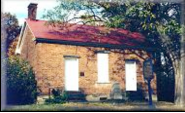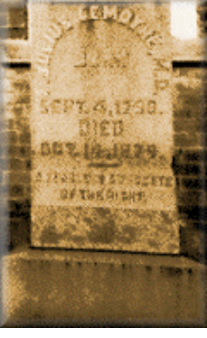America’s First Crematory
Located in the southwest corner of the State of Pennsylvania is the City of Washington which was chosen as the county seat of Washington County. Both city and county are considered part of the Pittsburgh Metro Area. Many people in their conversations refer to the City as “Little Washington” so as to not confuse their listeners with our Nation’s Capitol. The first colonists arrive in 1756; many coming from Scotland and bringing their Presbyterian beliefs. The early town was the center for the 'Whiskey Rebellion' of 1791, which was one of the first open rebellions against the new U.S. government and Constitution. The Rebellion was centered around a tax being imposed on whiskey distillation in the region. History tells us that Washington County was the first in the U.S. to be named in honor of President George Washington. It was here that two schools were started and combined to form the campus of Washington and Jefferson College a small, co-educational private liberal arts college founded in 1781.
In the early part of the 19th Century a practicing physician by the name of Francis Julius LeMoyne (1798-1879) was living in Little Washington. He was a devoted husband, a loving father of eight, the founder of Washington's Citizens Library, a co-founder of the Washington Female Seminary, and as it seems, a bit of a medical detective. When residents of his community kept dying from the same or similar causes Dr. LeMoyne became more and more convinced that the culprit was directly linked to the local burial practices. He believed contaminated matter from buried and decomposing bodies was running off into the streams and water sources and causing the same diseases to strike new victims. Cremation would eliminate disease-ridden contaminants from leeching into the soil and water supplies and spreading the fatal illnesses.
The innovative doctor, determined to stop the cycle of disease, set out to build a crematory. He approached the trustees of the public cemetery in the City of Washington, proposing that if they would give him permission, he would donate the money necessary for the construction of a crematory on cemetery property. The trustees never even considered LeMoyne's offer as cremation was not a popular concept to the protestant community and unthinkable for the Catholics.
Undeterred and using only sketchy information from European crematories, in 1876 Dr. LeMoyne built the crematory on his own land know as Gallows Hill. It cost $1500 and included a 30- by 20-foot brick building, a reception room, and a furnace room. Dr. LeMoyne designed the oven so that flames would not touch the bodies being cremated.

First Crematory in the United States
The first cremation at LeMoyne's facility took place on December 6, 1876. A total of 42 cremations were done there, the last in 1901. LeMoyne died at the age of 81 and his family made preparations for his burial in accordance with his wishes: his body was cremated in the little building he built and the ashes placed in an urn under a simple stone monument in front of the crematory. Ironically, Dr. LeMoyne was the third person cremated in his own crematory. The inscription on his monument to the left of this page reads:
F. Julius LeMoyne, M.D.
Born Sept. 4, 1798 Died Oct. 14, 1879
A Fearless Advocate of the Right
